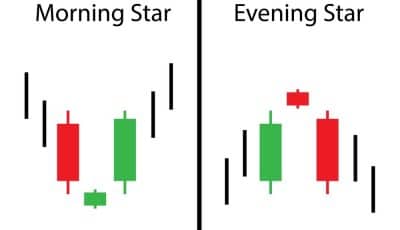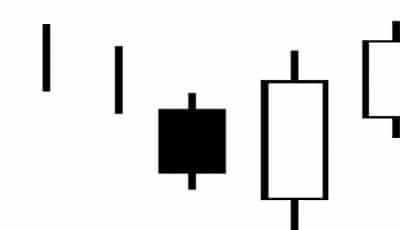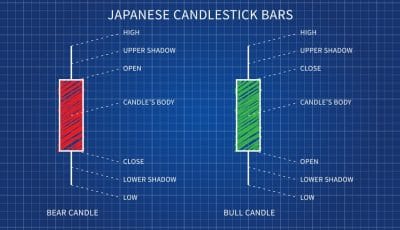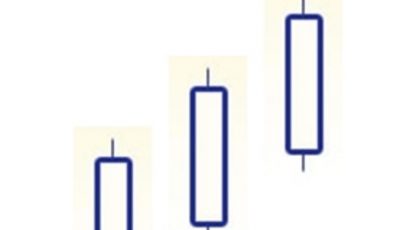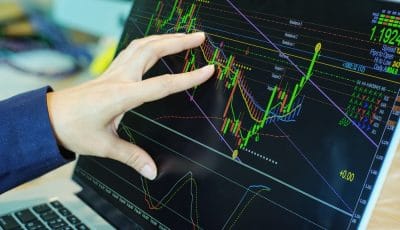
What is technical analysis and is trading based on technical analysis profitable?
Lets start with my definition of what I consider is technical analysis of financial price data. Technical analysis is using graphical charts to identify buy and sell patterns every possible way. With statistics proving that using these patterns gives a better chance for successfully trading the stock market. Let’s have a look at what kind of information we are looking for on the chart.
A first basic pattern is the breaking of a trend line and is a very powerful indication that the trend is reversing. A closing price breaking a downtrend line is generally a confirmation that the last turning point is a trend reversal.
A second basic pattern for making buying or selling decisions is the breaking of a horizontal resistance level, or a price turning at the level of a horizontal support line found at price turning points.
A third possibility is making use of more complex reversal and continuation price patterns like a head and shoulders reversal pattern, a triangle, rectangle or diamond continuation pattern, and so on.
A fourth possibility is using the Eastern candlestick chart instead of the normal Western bar chart. Candlesticks show a number of bottom and top reversal patterns and some continuation patterns that can be used successfully for entering or exiting a trade. These patterns have exotic names like bullish break out pattern, bearish break out pattern, bullish engulfing pattern and bearish engulfing pattern, doji, harami, hanging man, evening star and morning star, pennant formation and much more.
A fifth possibility is counting Elliott impulse and correction waves. Ideally you can enter an up move just after the start of a medium to longer term impulse wave 3, generally after an ABC correction wave for the creation of correction wave 2. Most of the time a 3-wave has an extension with another impulse wave of a lower degree.
A sixth possibility is using oscillators and indicators looking at overbought and oversold areas and specifically at normal and hidden price/indicator divergences announcing trend reversals or previous trend continuations.
Can you imagine the decision making power you have for buying or selling a stock combining all of these techniques? Most reversals in price are announced by more of the previous mentioned techniques. But there is more than just the technical analysis.
Before we can answer the question, “is trading based on technical analysis profitable?” we have beside the use of technical analysis to define entry and exit points, the need for good money and risk management. First let’s talk about money management. Personally I prefer the method that has proven to be the most profitable with the best results in every test I made. That is using a limited fixed number of stocks where every stock gets an equal part of the capital at the start, but there is no profit or loss sharing between the stocks. It has also the big advantage that it is so much more easy to follow-up just a small number of stocks with detailed technical analysis.
Risk management makes sure that the risk-to-reward ratio is in favor of the reward. Opening a trade you must limit the risk and make sure that the first reward target is better than the risk. Future price projection techniques will give you an estimate as to where price can go. Once an open position, you must also use a trailing stop method to make sure you keep the profit and that you will close the trade if standard technical analysis fails. Future price estimates can be made using Fibonacci projections crossing pitchfork channels and a number of other techniques.
It should be clear by now that the pure technical analyst does not look for fundamental data about the stock he is trading. You could basically leave out the name and even the time period from the chart and the technical trader will still be able to do the job. Because price data moves in a fractal way you can basically trade with the same rules in any time frame, from bar charts using minutes, hours, days or weeks.
So, the big question again, is trading based on technical analysis techniques profitable? YES it is!
